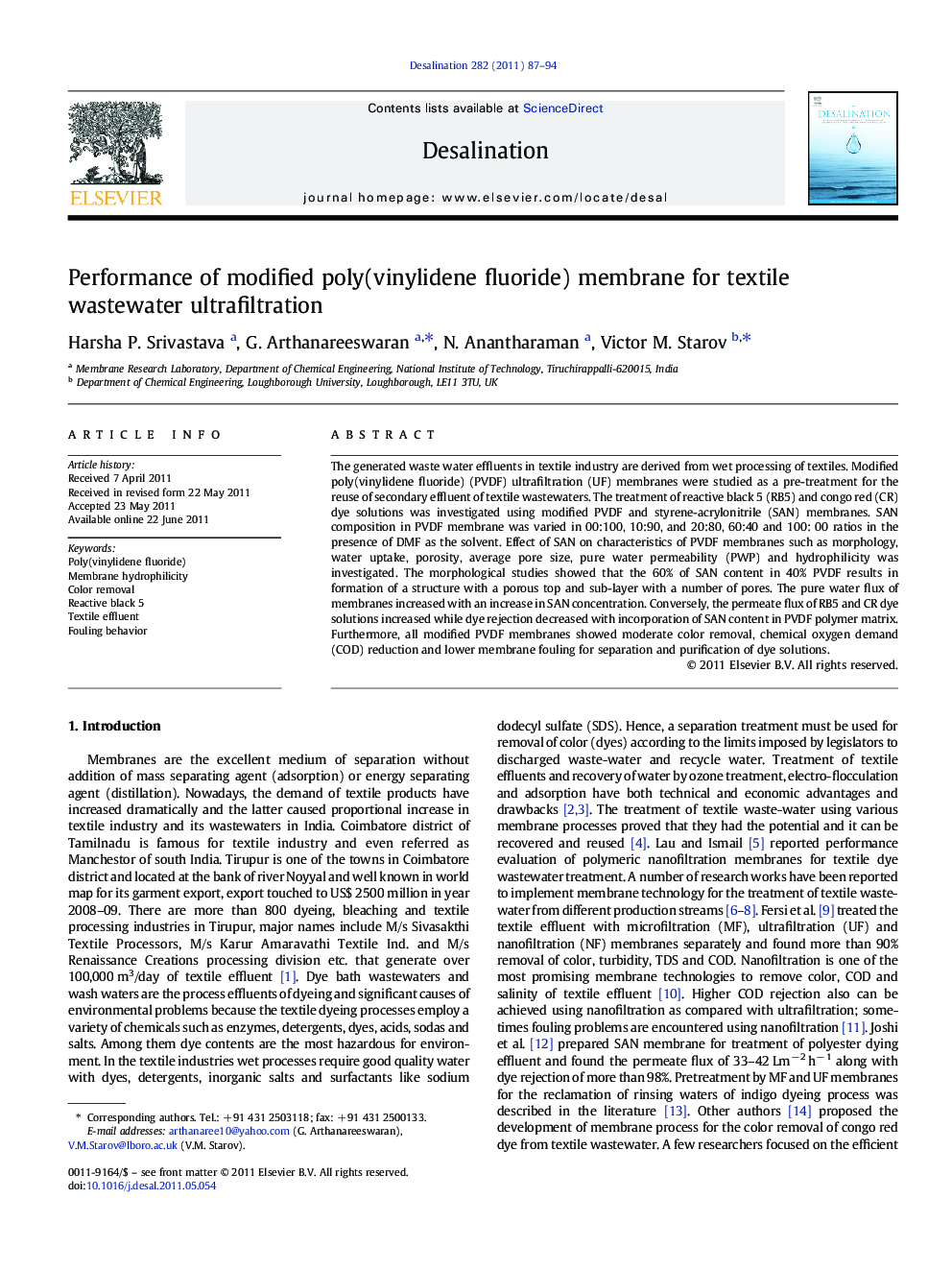| Article ID | Journal | Published Year | Pages | File Type |
|---|---|---|---|---|
| 624586 | Desalination | 2011 | 8 Pages |
The generated waste water effluents in textile industry are derived from wet processing of textiles. Modified poly(vinylidene fluoride) (PVDF) ultrafiltration (UF) membranes were studied as a pre-treatment for the reuse of secondary effluent of textile wastewaters. The treatment of reactive black 5 (RB5) and congo red (CR) dye solutions was investigated using modified PVDF and styrene-acrylonitrile (SAN) membranes. SAN composition in PVDF membrane was varied in 00:100, 10:90, and 20:80, 60:40 and 100: 00 ratios in the presence of DMF as the solvent. Effect of SAN on characteristics of PVDF membranes such as morphology, water uptake, porosity, average pore size, pure water permeability (PWP) and hydrophilicity was investigated. The morphological studies showed that the 60% of SAN content in 40% PVDF results in formation of a structure with a porous top and sub-layer with a number of pores. The pure water flux of membranes increased with an increase in SAN concentration. Conversely, the permeate flux of RB5 and CR dye solutions increased while dye rejection decreased with incorporation of SAN content in PVDF polymer matrix. Furthermore, all modified PVDF membranes showed moderate color removal, chemical oxygen demand (COD) reduction and lower membrane fouling for separation and purification of dye solutions.
Research highlights► Effect of SAN on characteristics of PVDF membranes. ► SAN enhance the wettability, permeability and the antifouling ability of PVDF membranes. ► Treatment of textile dye solutions using modified PVDF membranes. ► Color removal of around 97% of CR dye and over 70% of RB5 dye.
